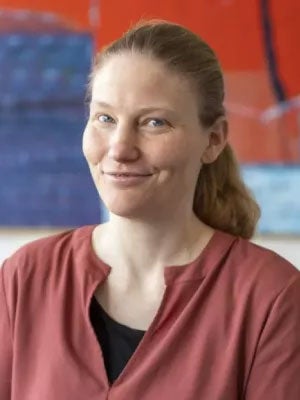Babies are worse at distinguishing between the voices of unfamiliar male adults compared to unfamiliar females, according to a new study by Madeleine Yu, a doctoral candidate at the University of Toronto Mississauga.
"This was not what we were expecting," says Yu, a researcher in U of T Mississauga's Child Language and Speech Studies (CLASS) lab, whose study was published in the journal JASA Express Letters. "It seems like there's something going on with this difference in how infants respond to unfamiliar male voices."

Yu collaborated on the study with CLASS lab director Elizabeth Johnson, a professor in U of T Mississauga's department of psychology, and former lab research associate Natalie Fecher who, in 2019, completed a study on how well 4.5-month-old infants can tell apart unfamiliar female voices. Yu replicated the procedures of this earlier study but changed the talkers to males to determine how gender might impact the findings.
The participants were 48 infants from the Greater Toronto Area who were all ages four to five months and monolingual English learners. Mothers were primary caregivers for at least 46 of the babies.
Seated on their caregiver's lap in a special booth that minimized external sounds, each infant was exposed to audio recordings of 40 unrelated simple sentences spoken by pairs of adult males. The male talkers were all native English speakers born and raised in Canada with acoustically similar voices, and spoke their sentences in a neutral tone of voice.
When an audio recording played, a multi-coloured flickering checkerboard with a blinking red star in the centre would activate on a computer monitor in front of them. When the infants responded to the audio by turning their attention to the monitor, the researchers tracked how long they looked at it.
The first phase involved familiarizing the infants with one male talker by playing his recordings repeatedly.
Then, the researchers conducted four trials: two same-voice trials (with recordings by the same familiar male), and two different-voice trials (with recordings from a new, unfamiliar male).

The researchers found that the lengths of time the infants looked at the monitor were the same during both trials. This result differs from that of Johnson and Fecher's 2019 study, where the infants looked significantly longer during the same-voice trial than during the different-voice trial.
This suggested to the researchers that the infants were less able to detect a talker change with the male voices than with the female voices.
"It's possible that the infants' greater exposure to females [as their primary caregivers] shaped their perception to better tell apart female versus male voices," Yu says.
Johnson adds another explanation is that it could be evolutionary. "We know the auditory system develops before the visual system, and we also know that identifying your caregiver is really important [for survival]. Historically, females have tended to be the primary caregiver," says Johnson. "So, there could be some evolutionary argument for being more tuned into female voices early on than male voices."
Yu and Johnson say studying such young subjects presented its challenges, forcing researchers to organize trials around the unpredictable nap times, feeding schedules and temperaments of the infants. But Yu says the effort was worth it, as the study fills a glaring gap in infant voice recognition literature - which features almost exclusively female talkers - and so provides a rare look at how infants perceive the world.
"I think it's really fascinating that by testing differences in looking behaviour, we can make inferences about the differences in the perception of a four-month-old," Yu says.
The study builds on a body of speech processing and talker recognition research that Yu has completed throughout her higher education journey, which includes a bachelor of science in cognitive and behavioural science at the University of California, San Diego and a master's degree in psychology at U of T.
She is also examining differences in how we recognize the voices of individuals with familiar and unfamiliar accents, a topic that is the focus of her doctoral dissertation.






